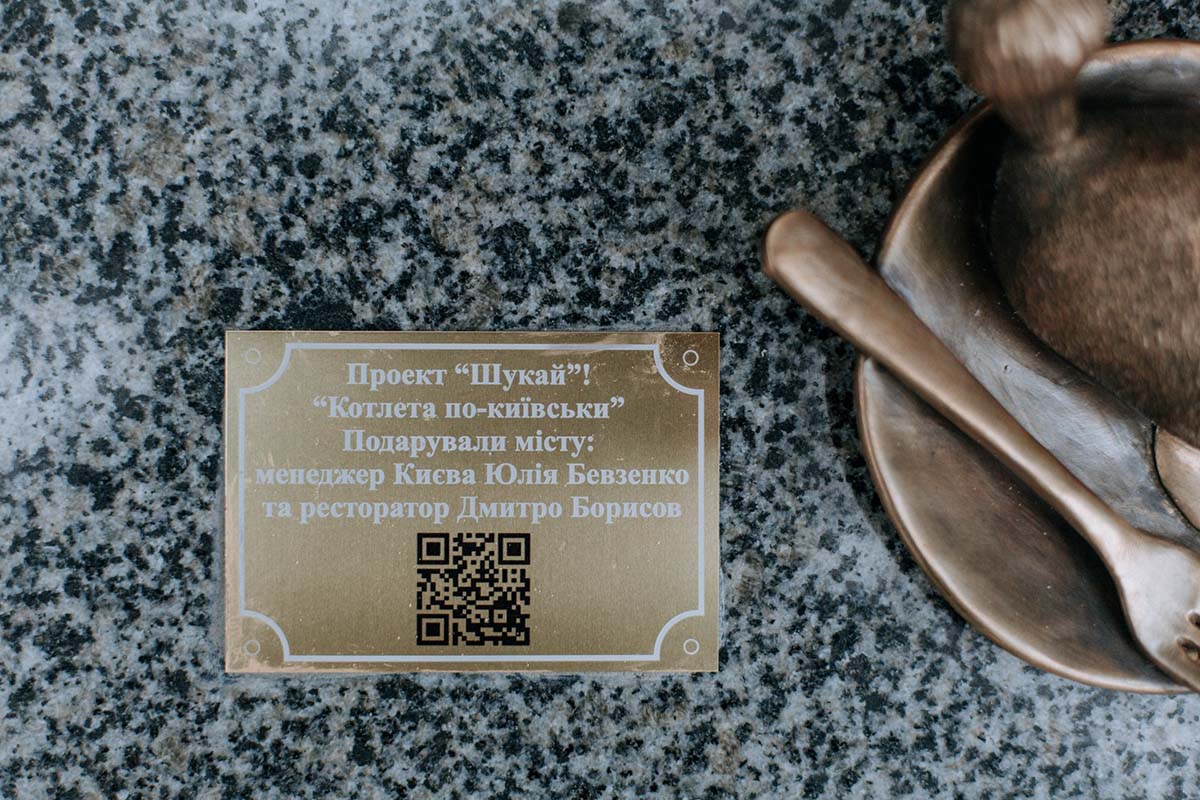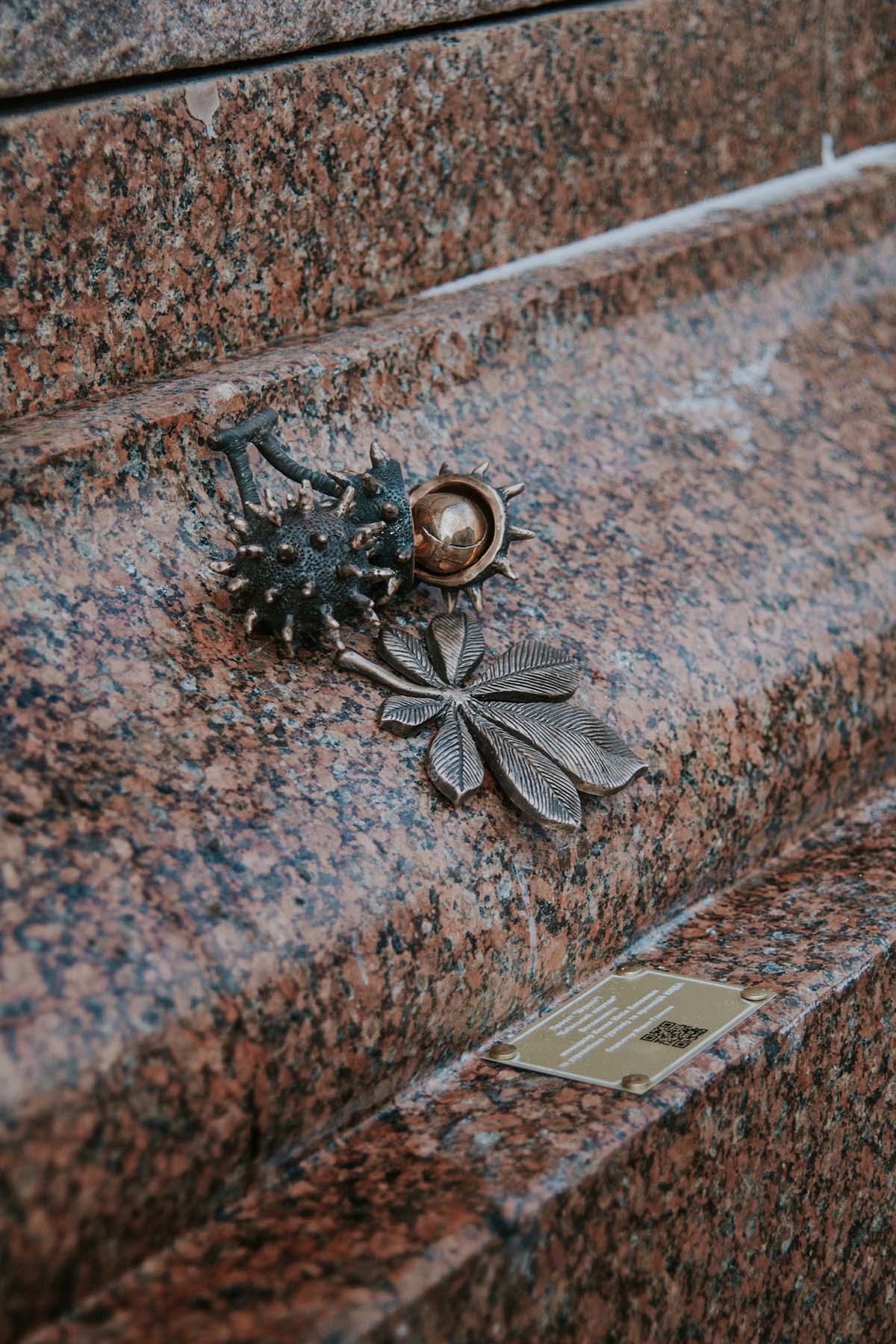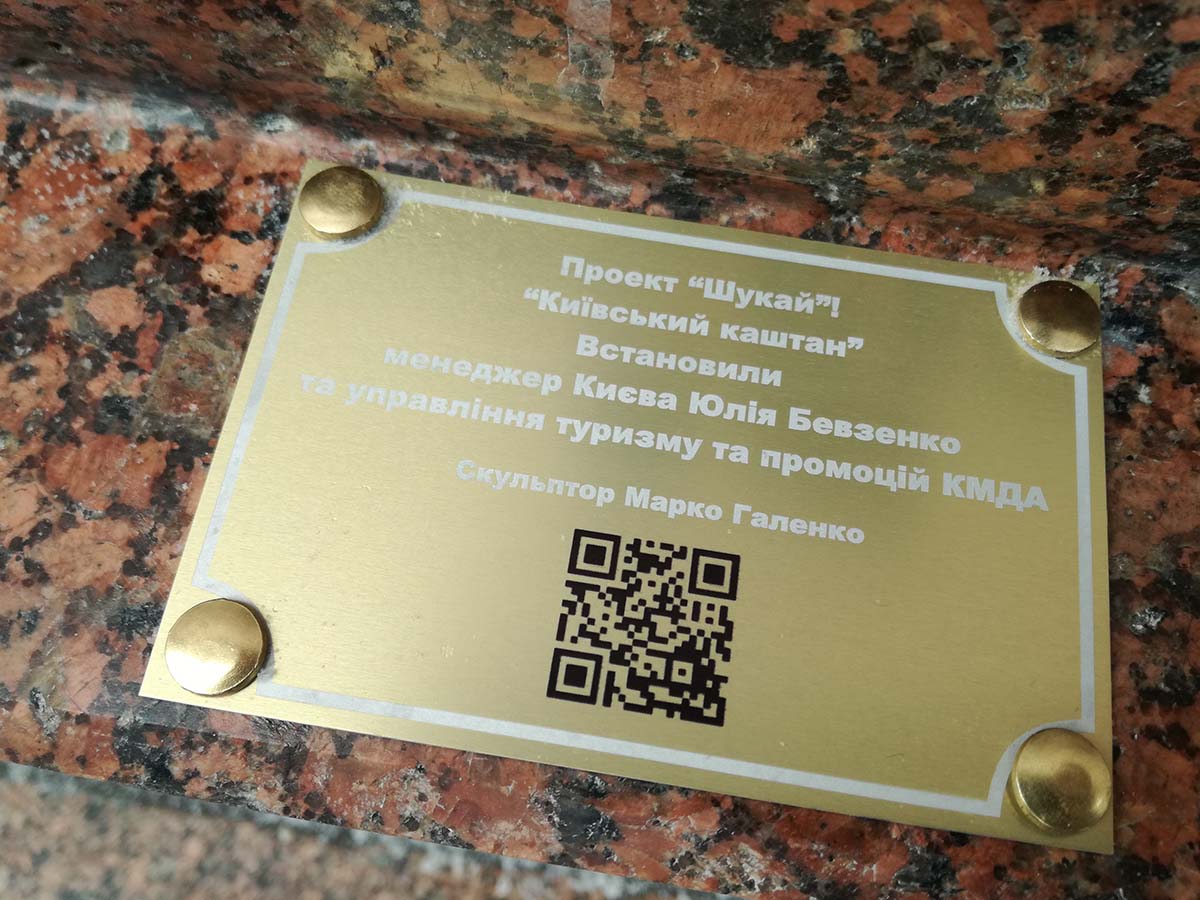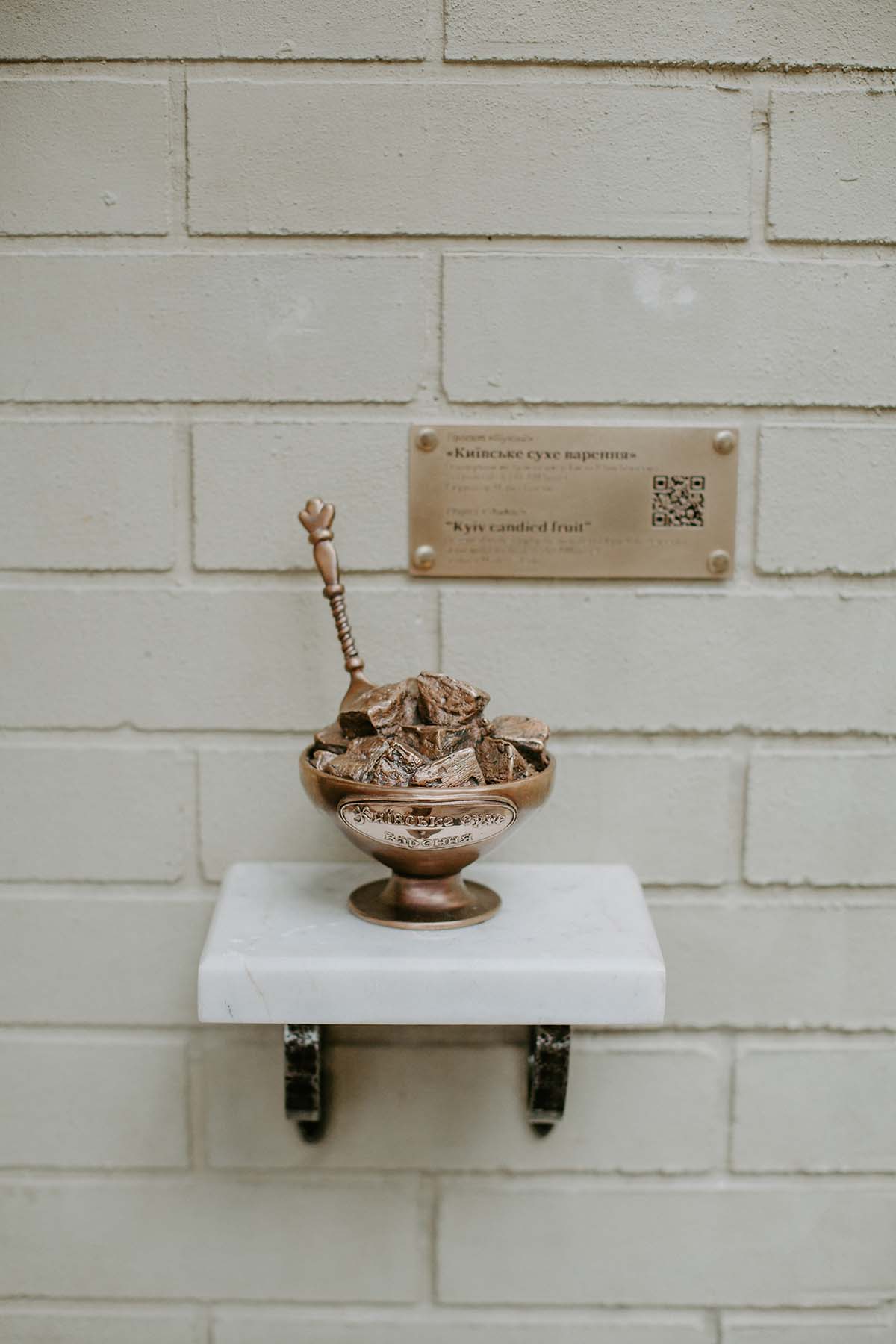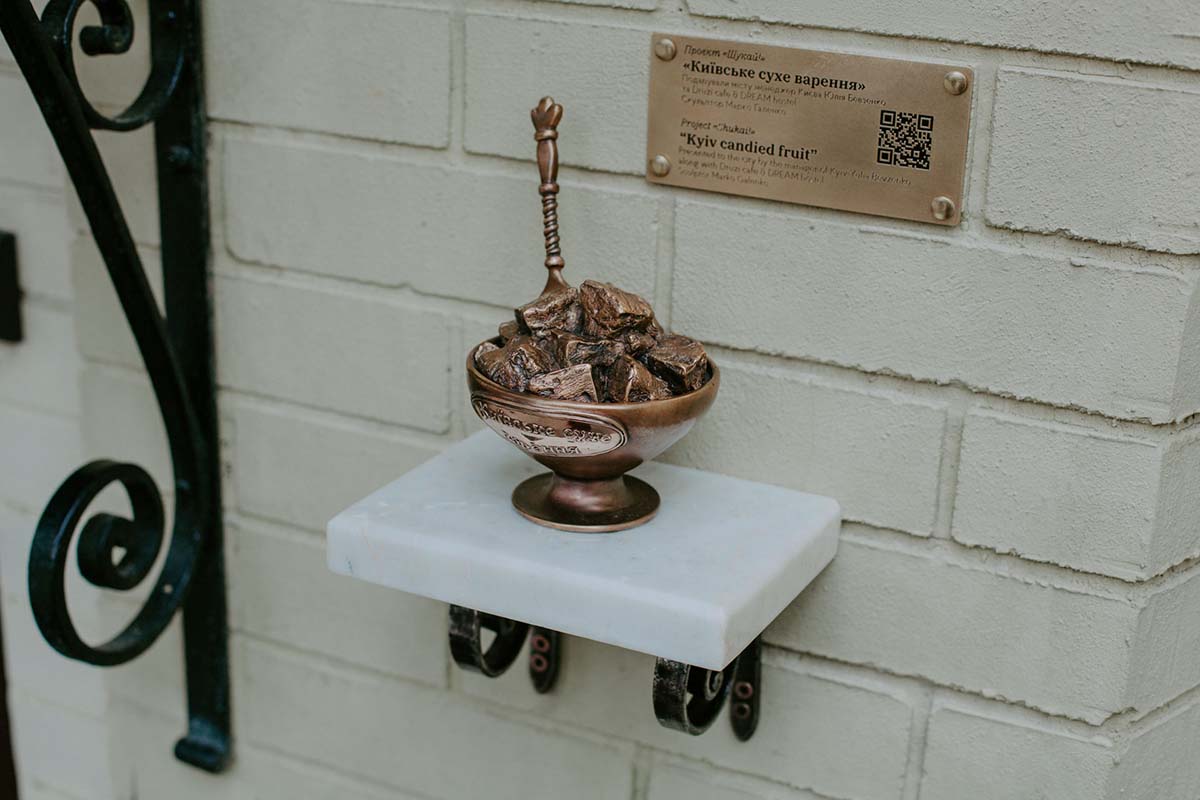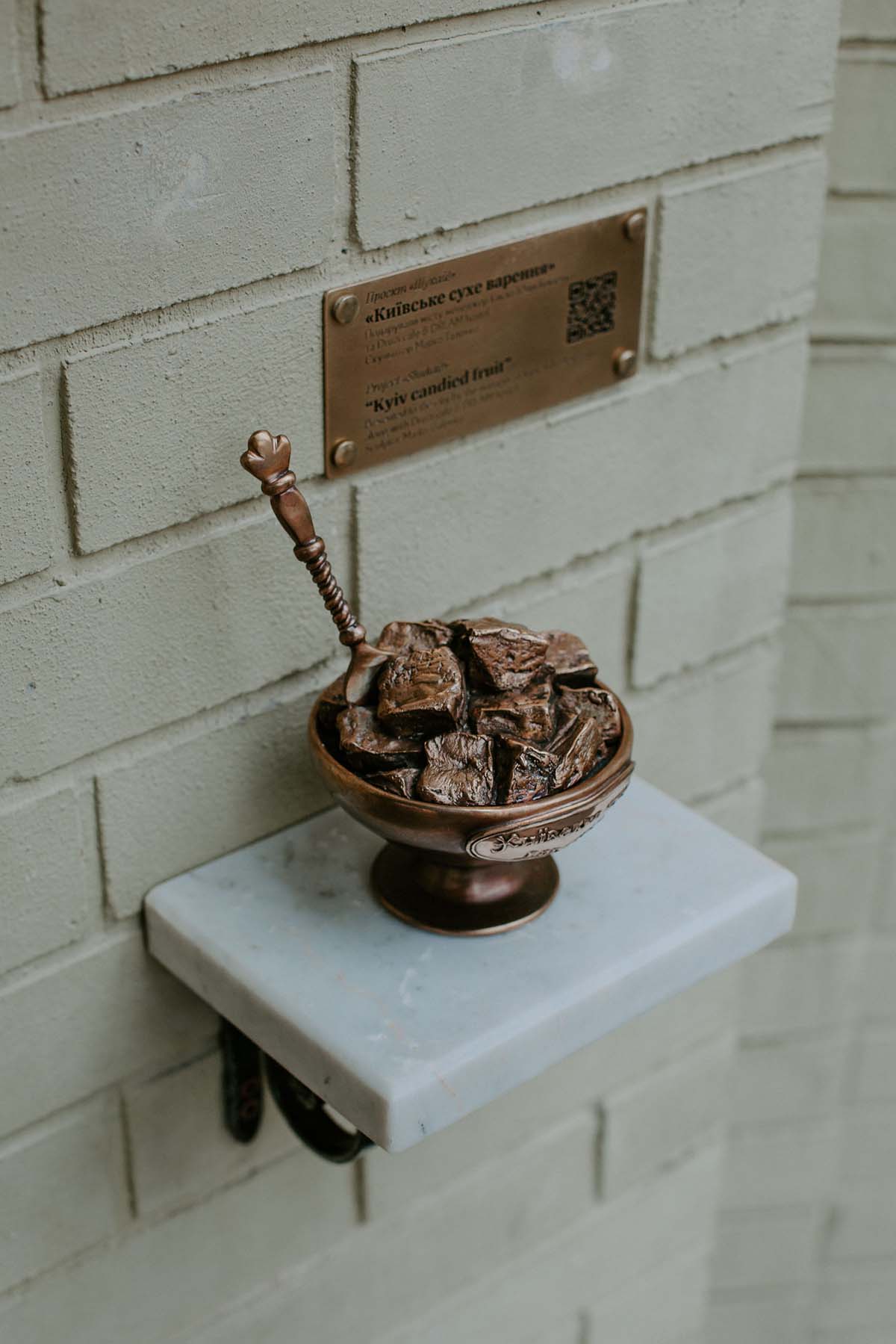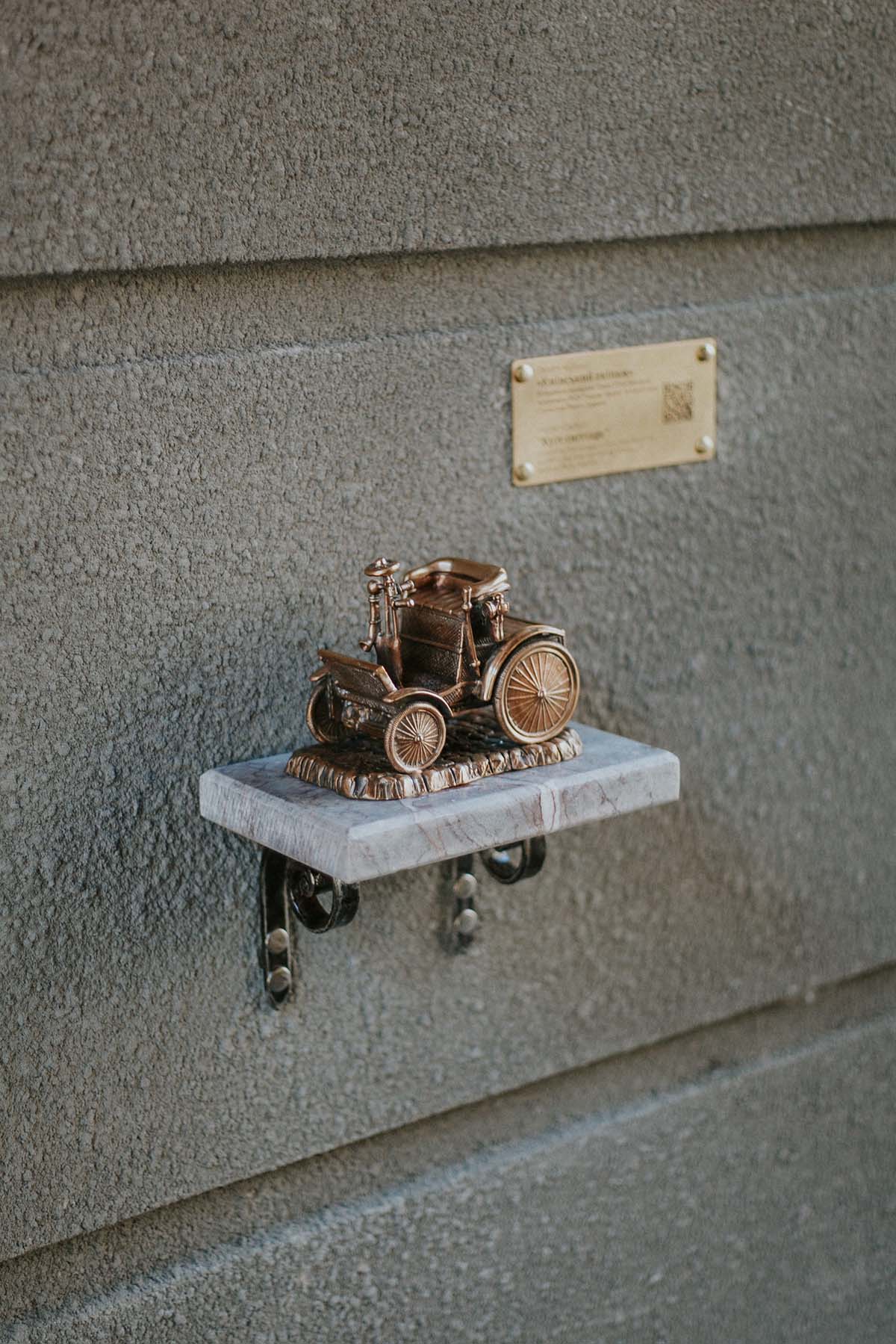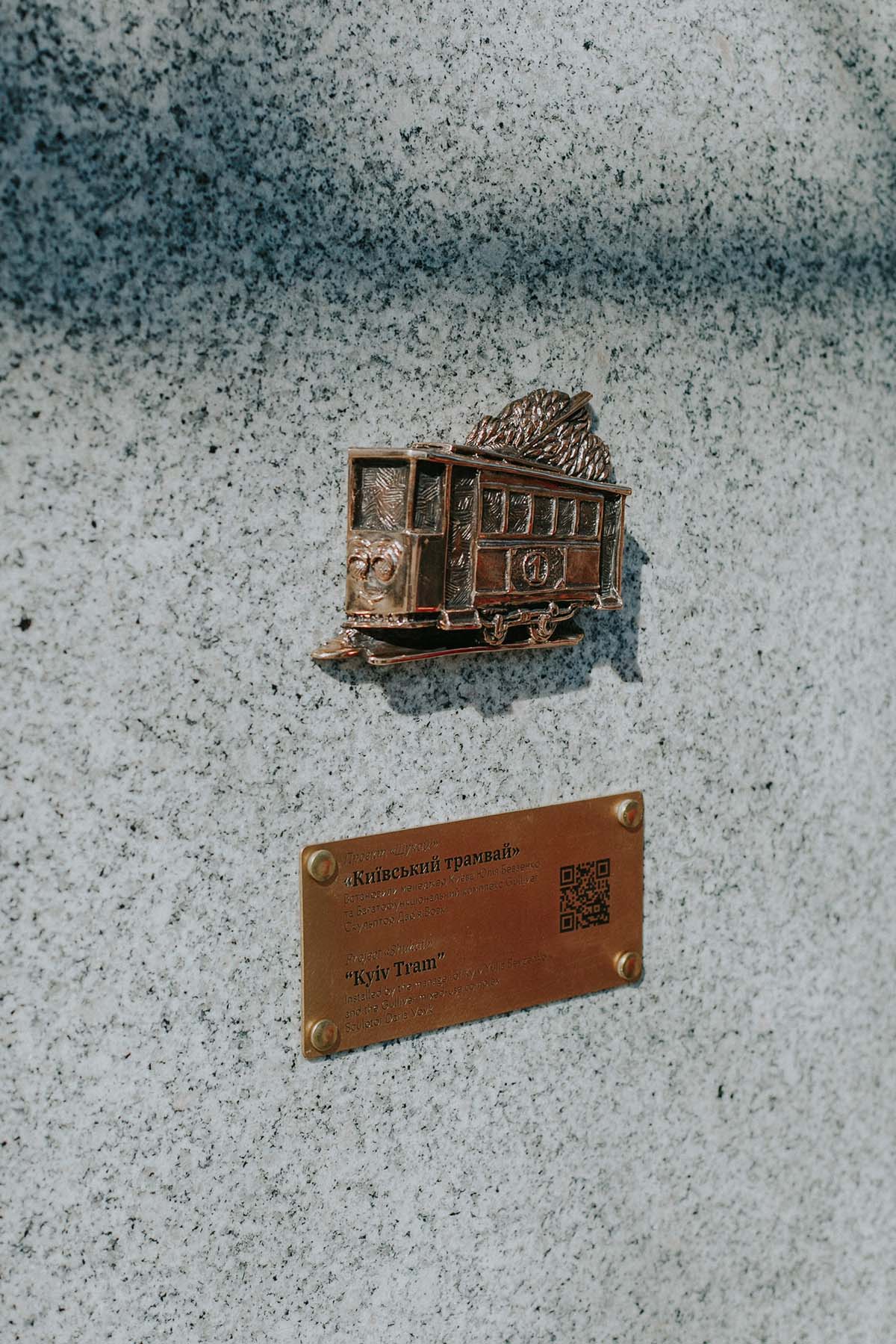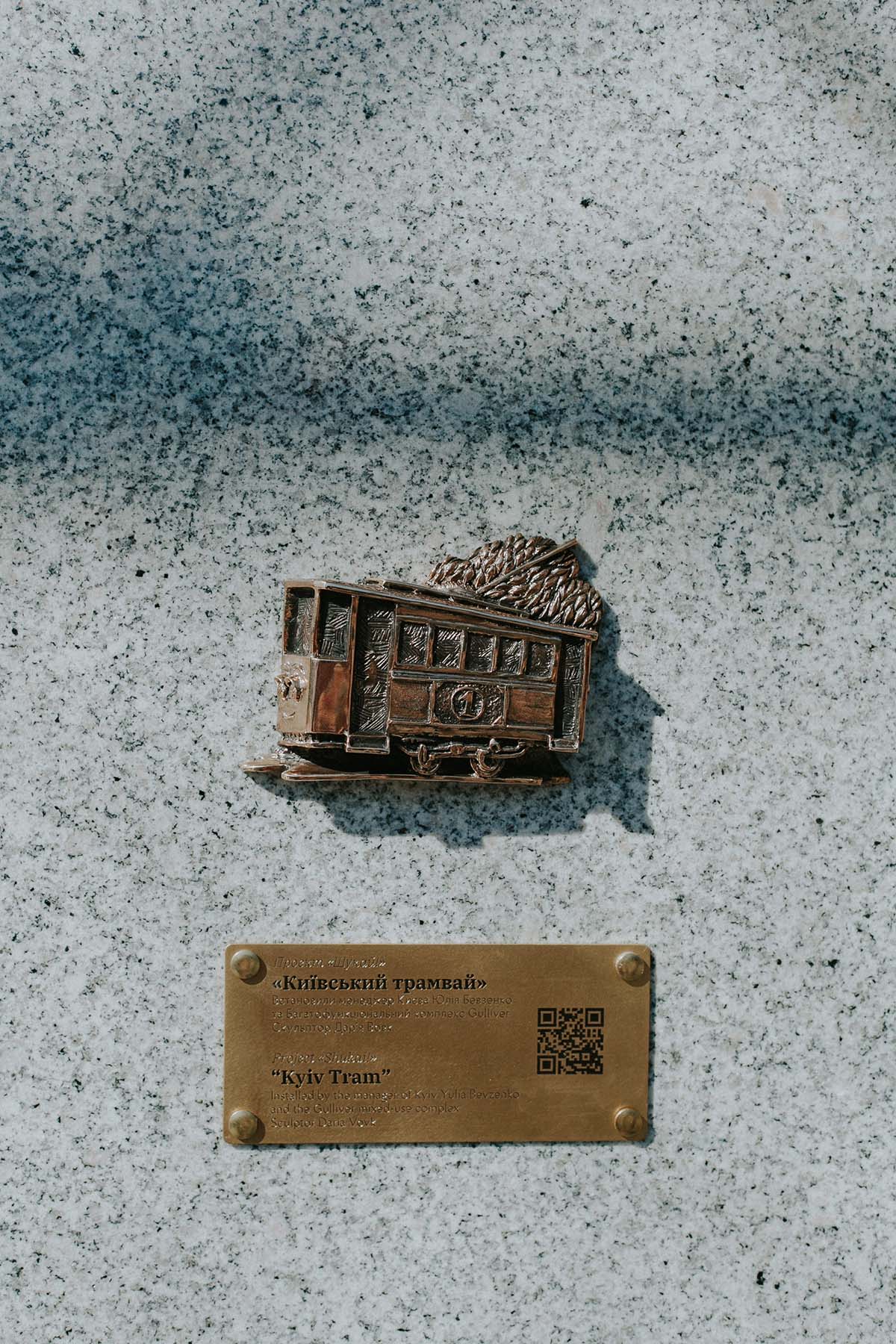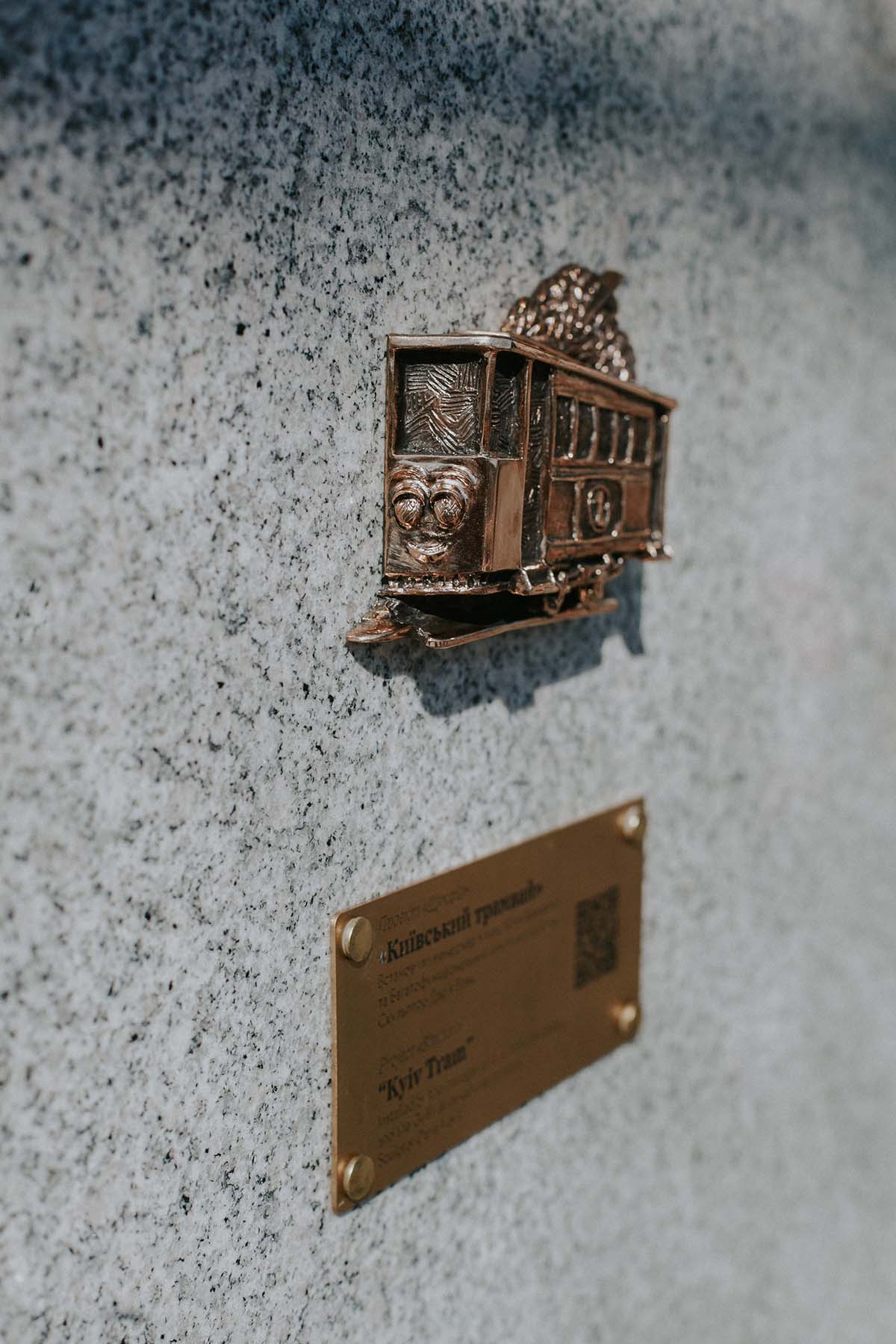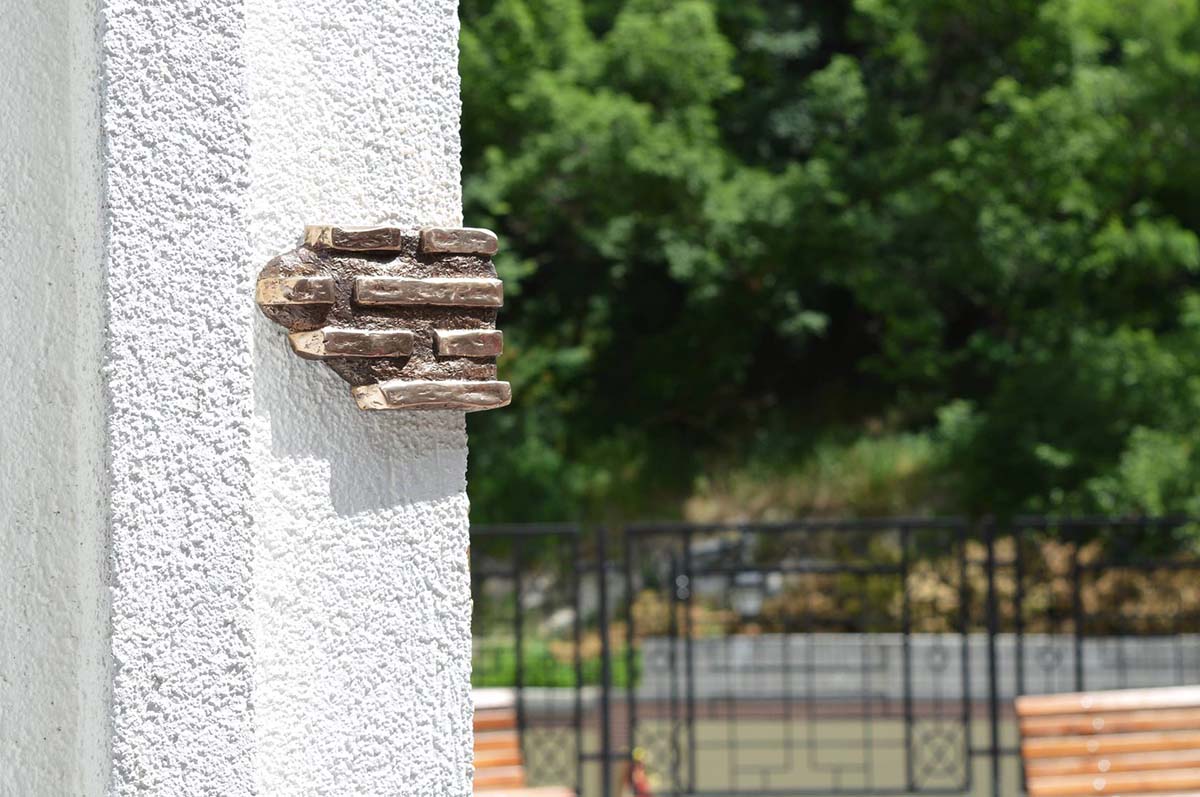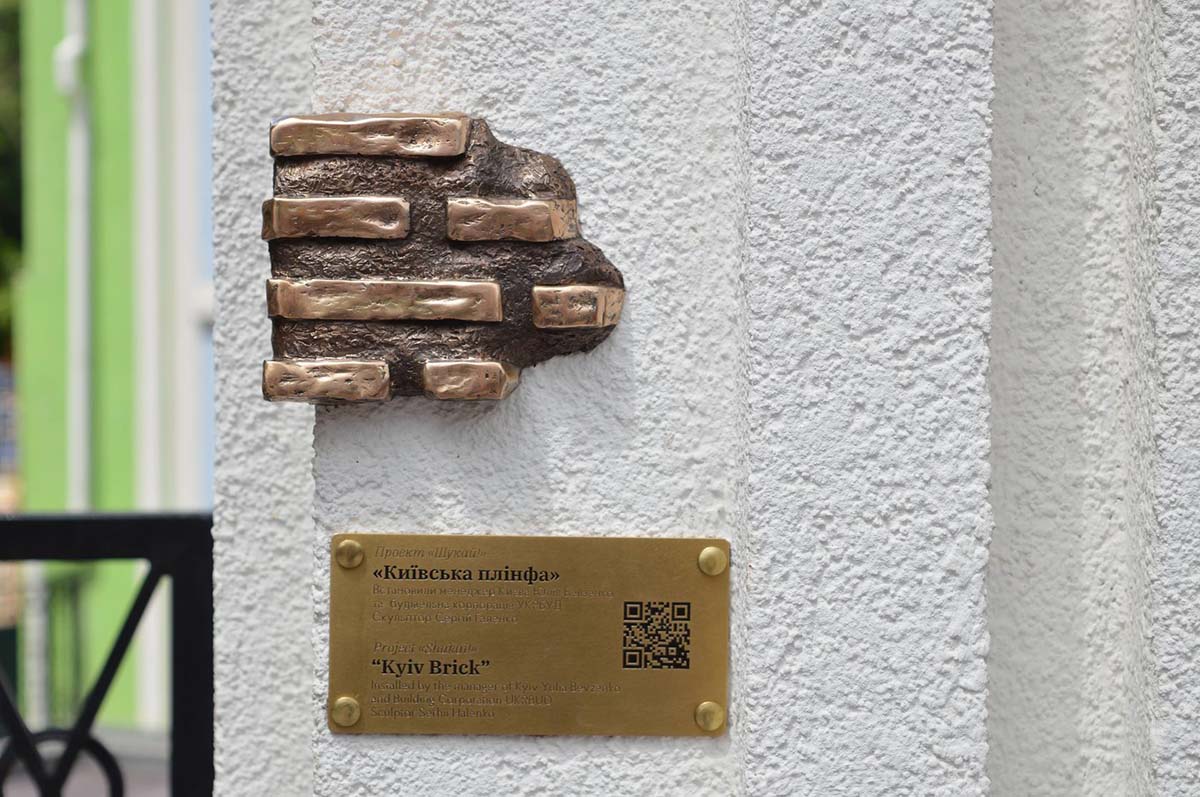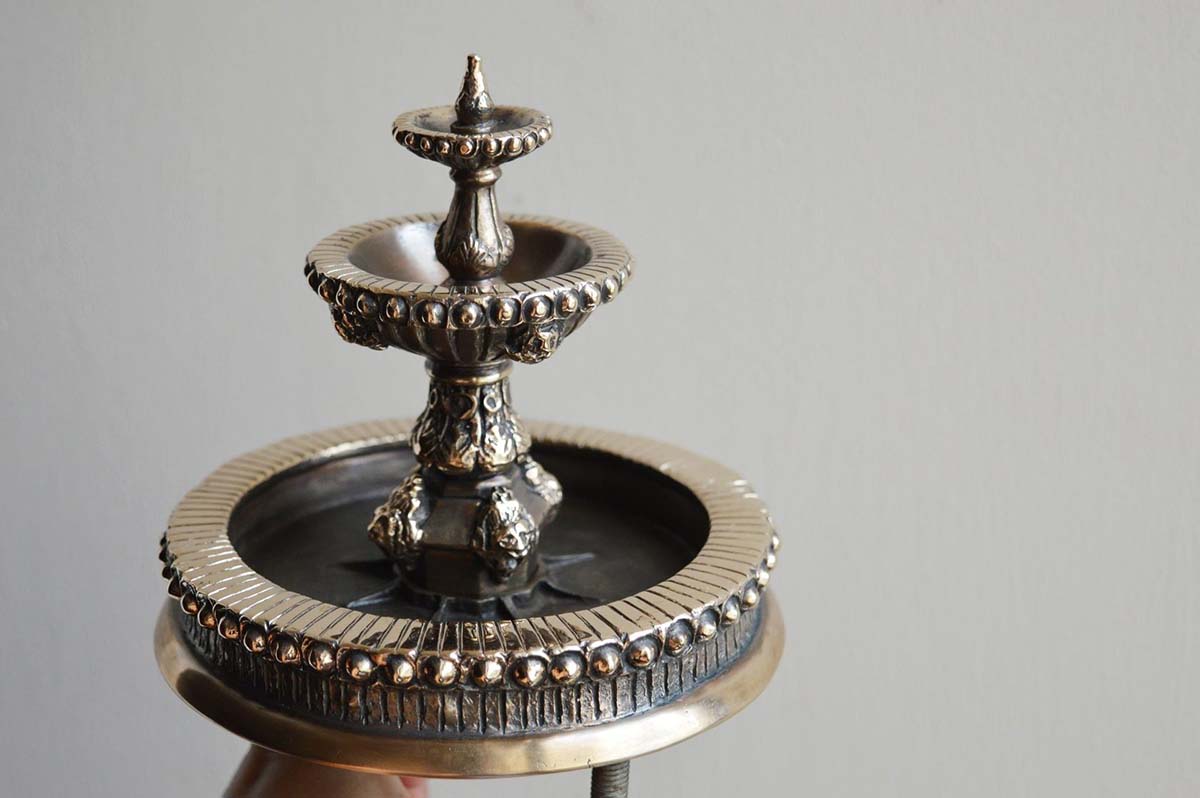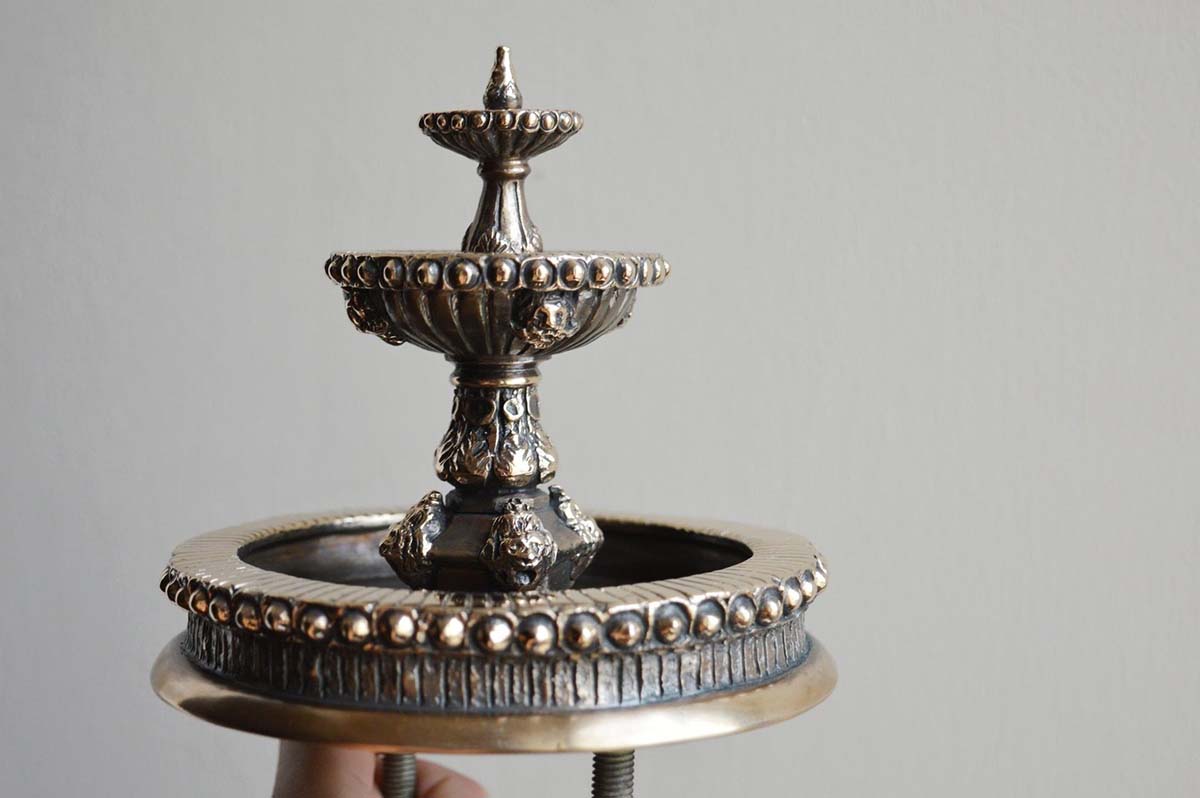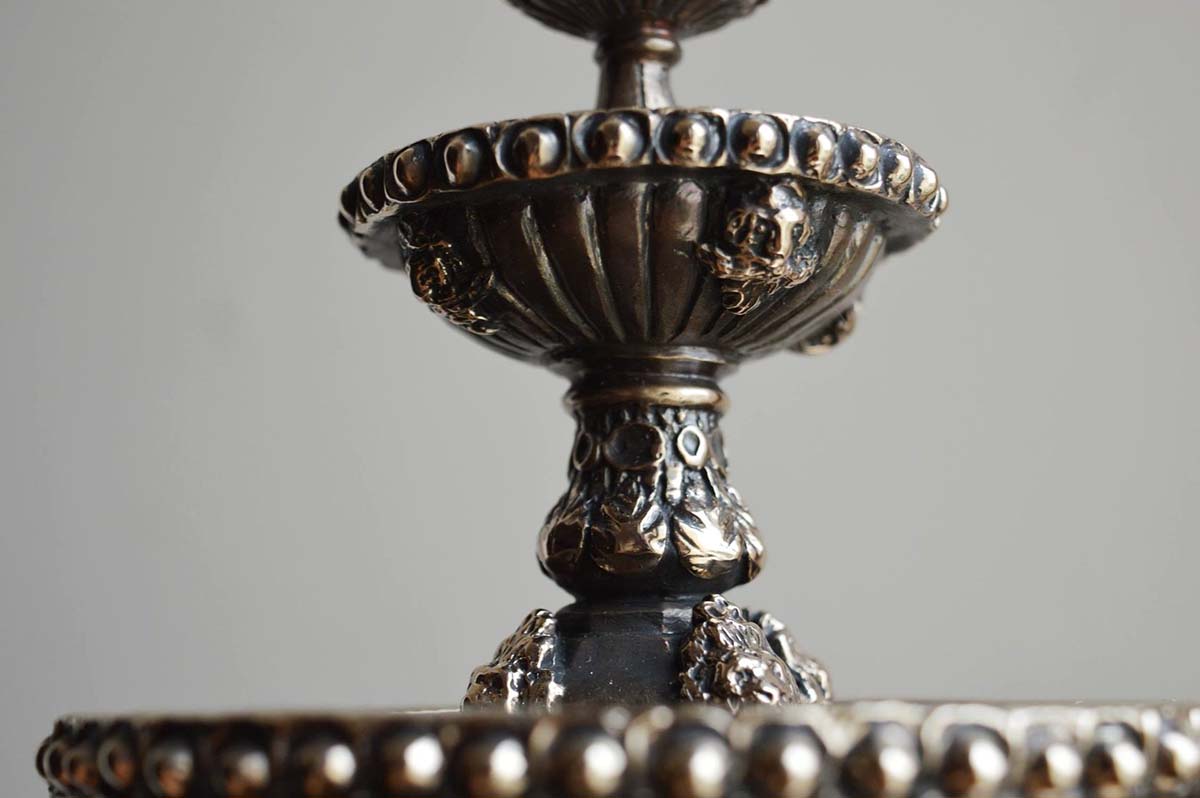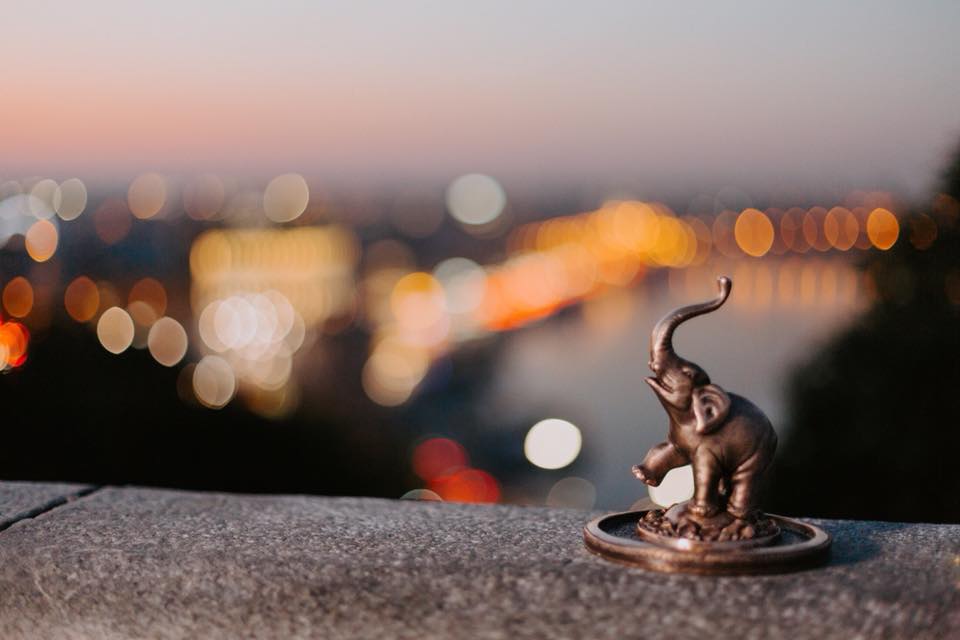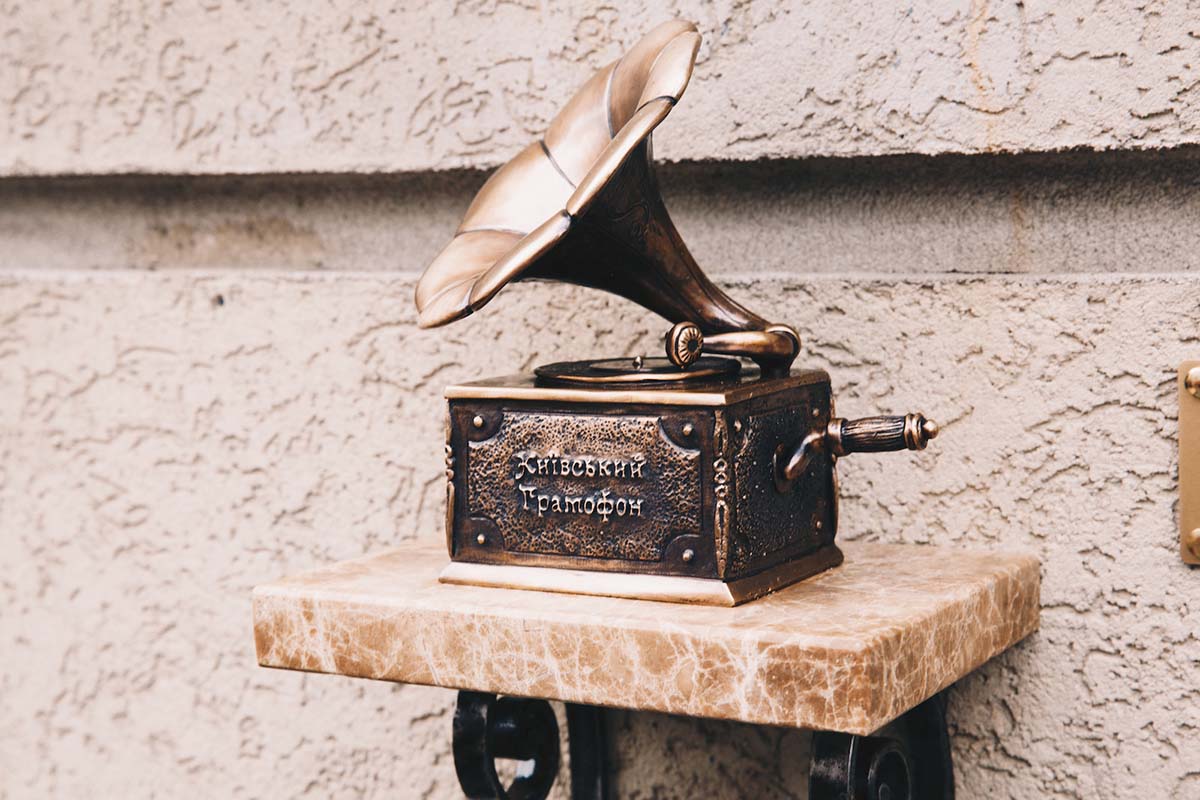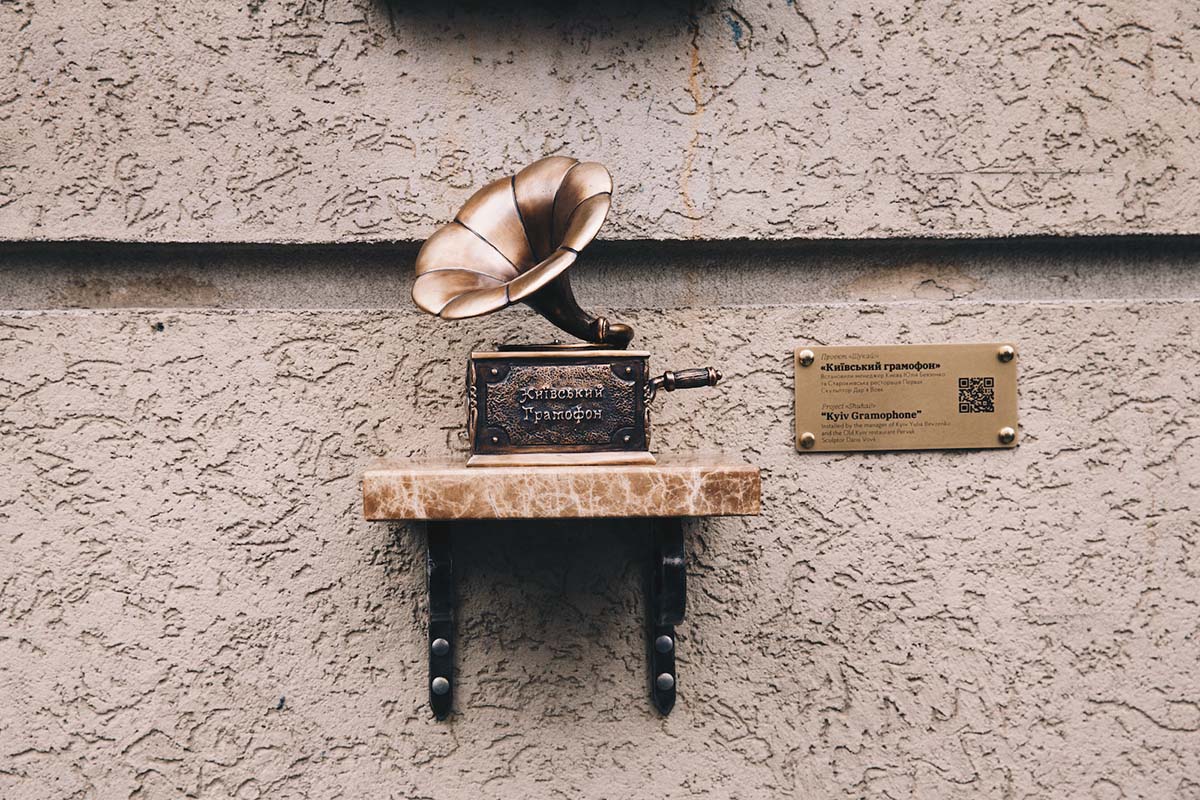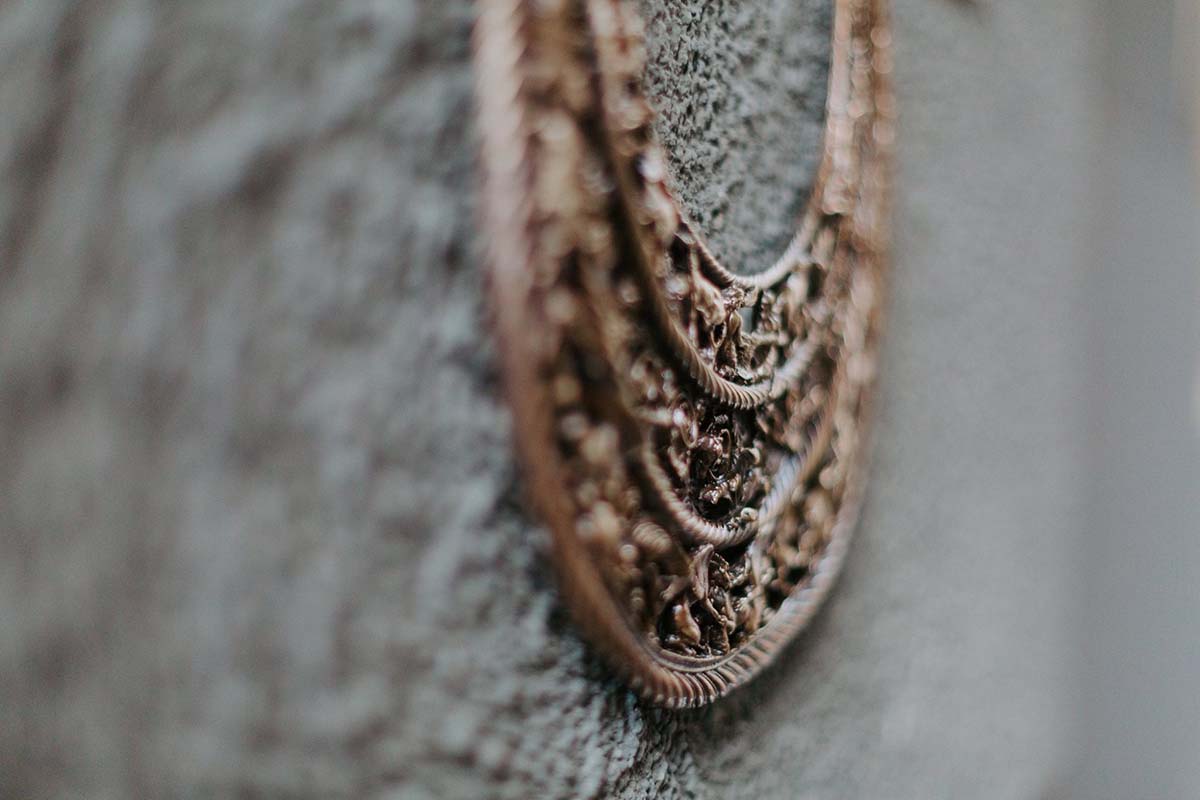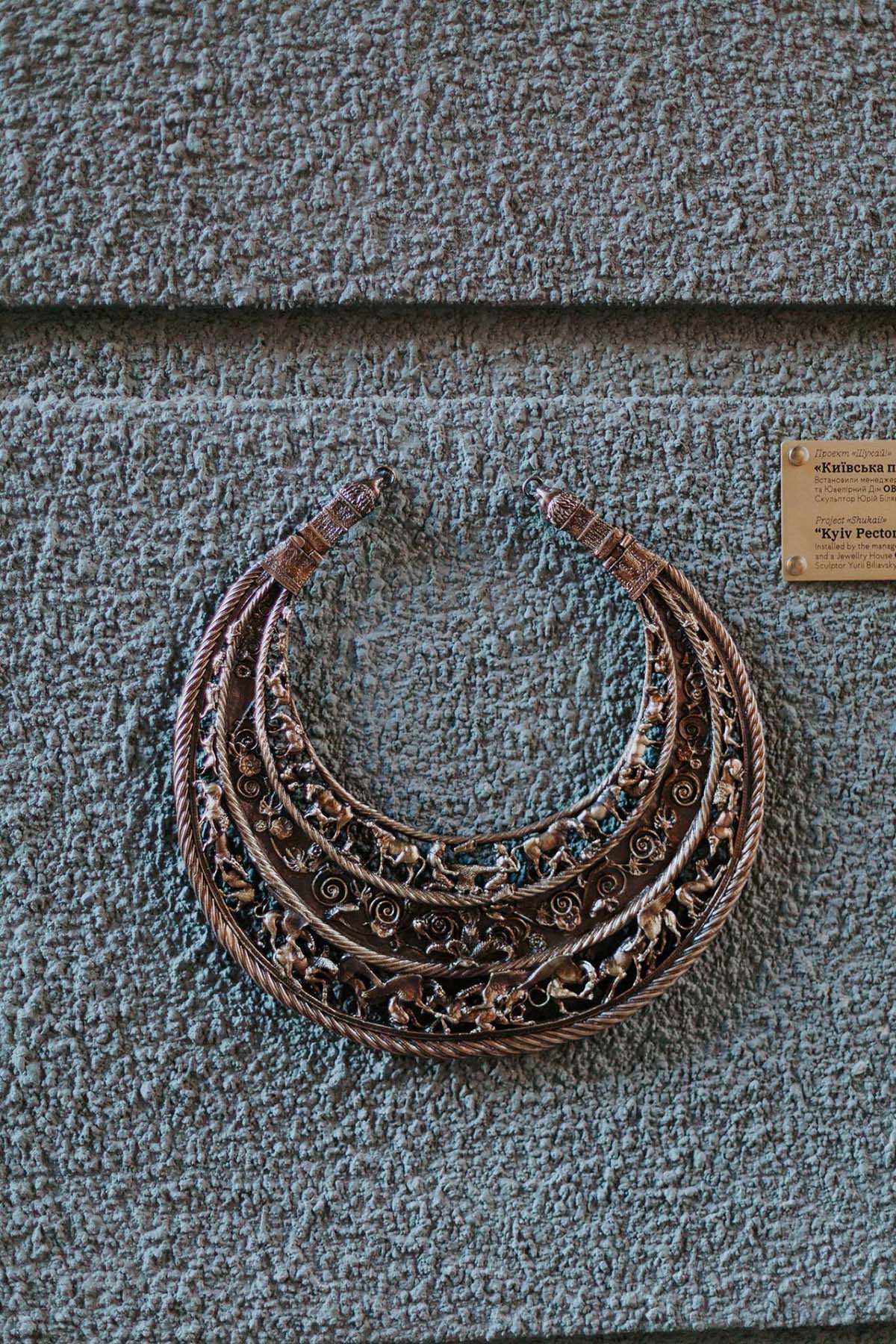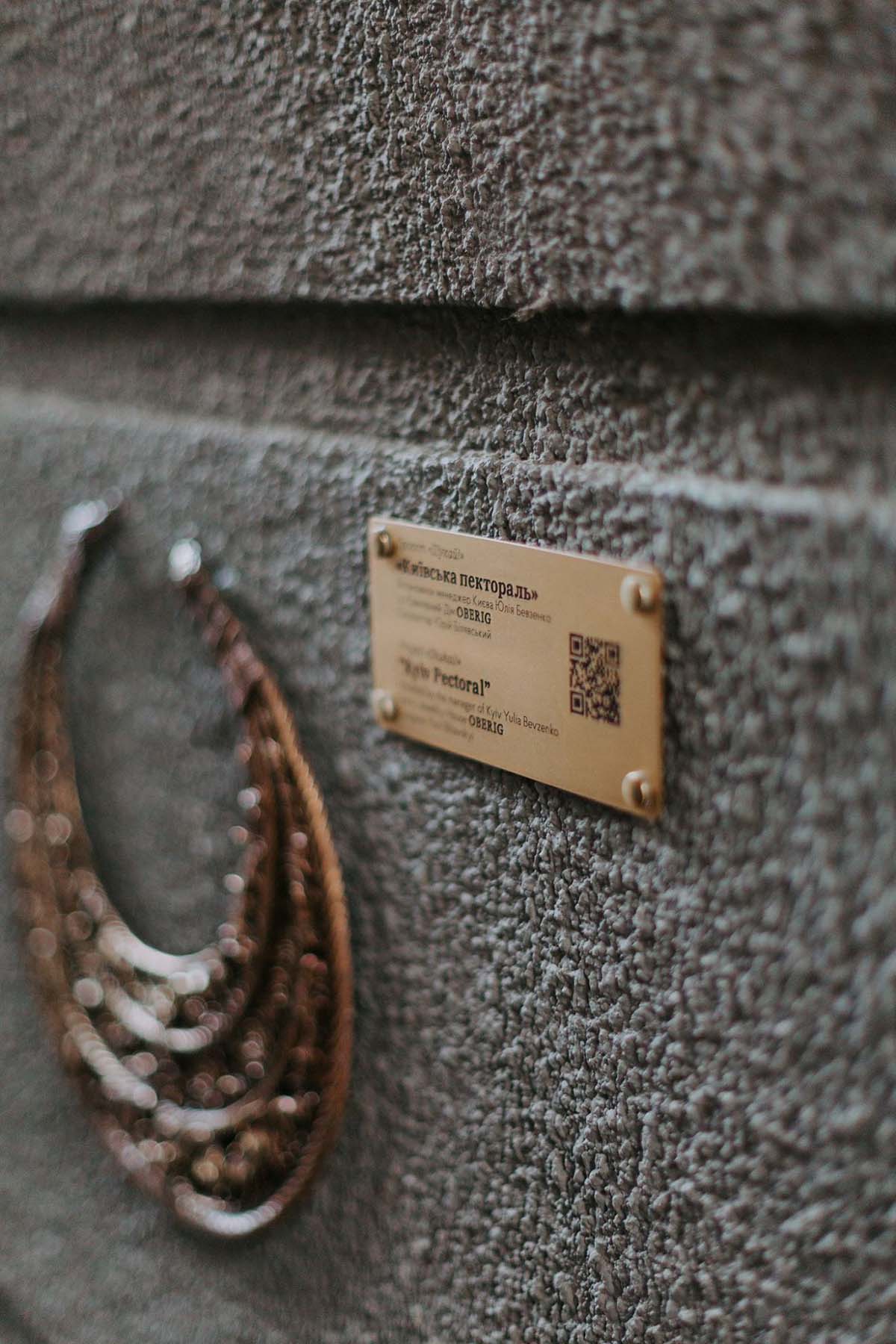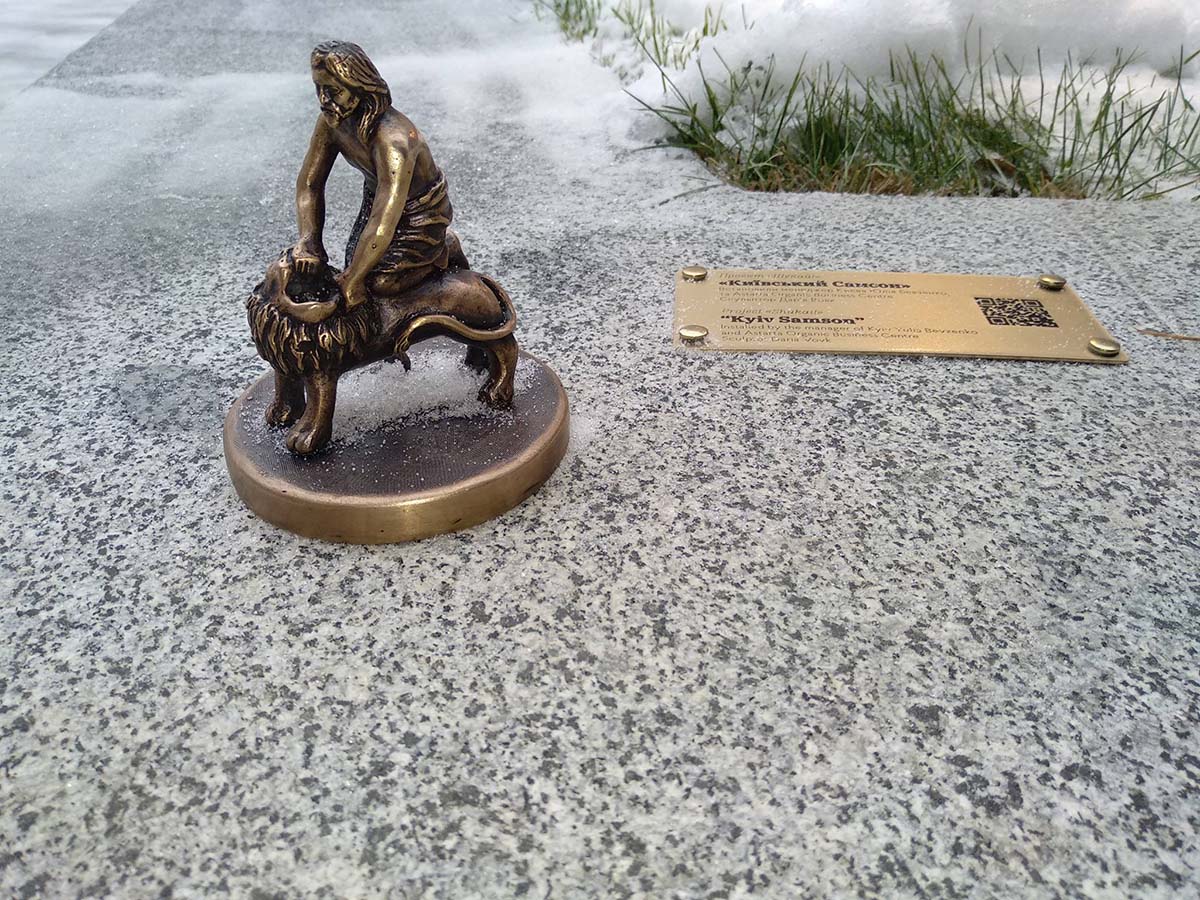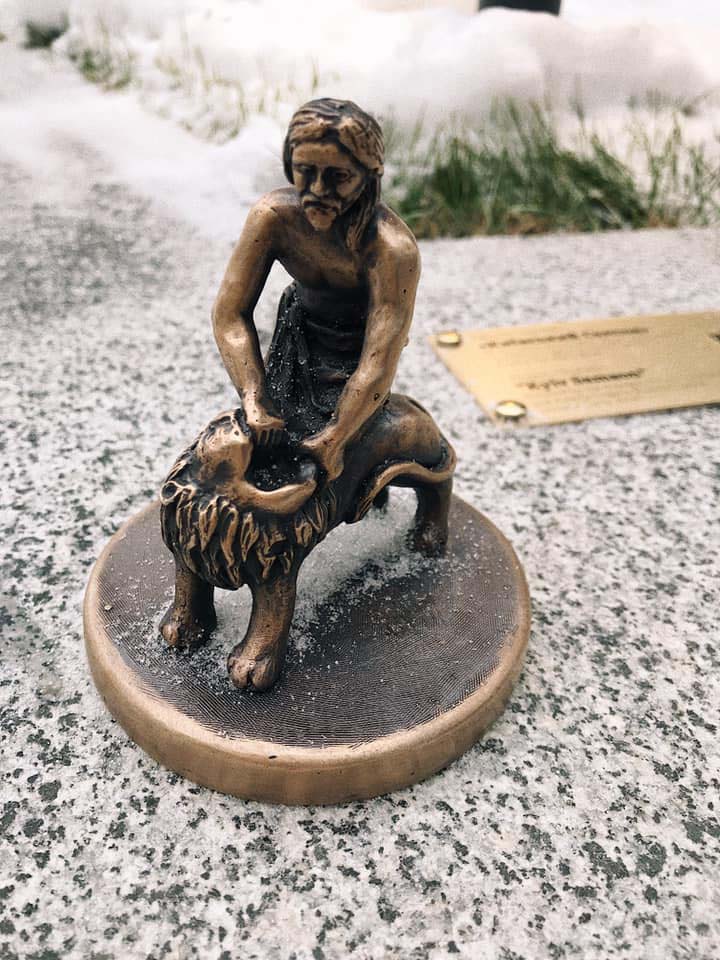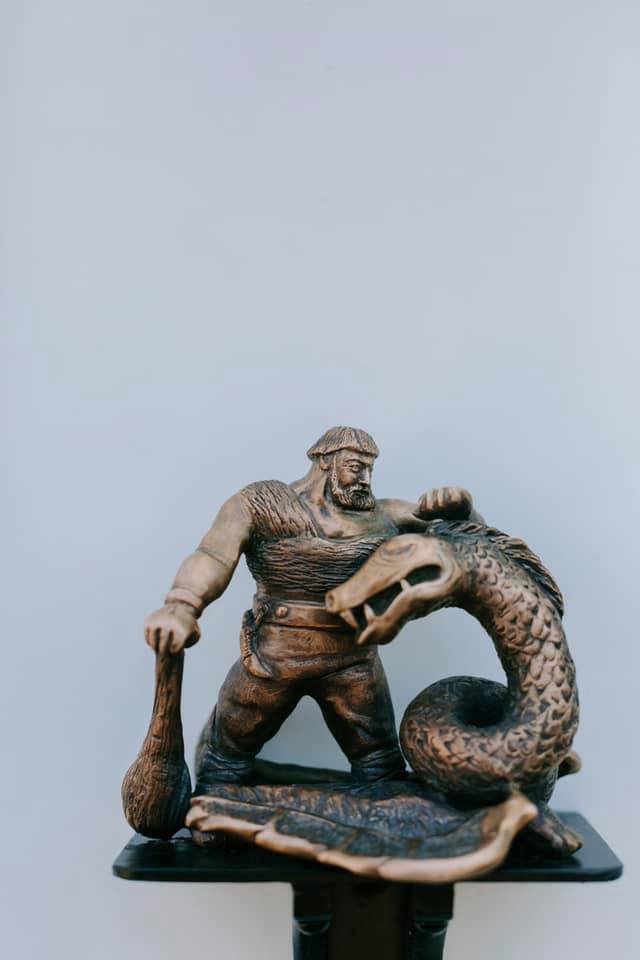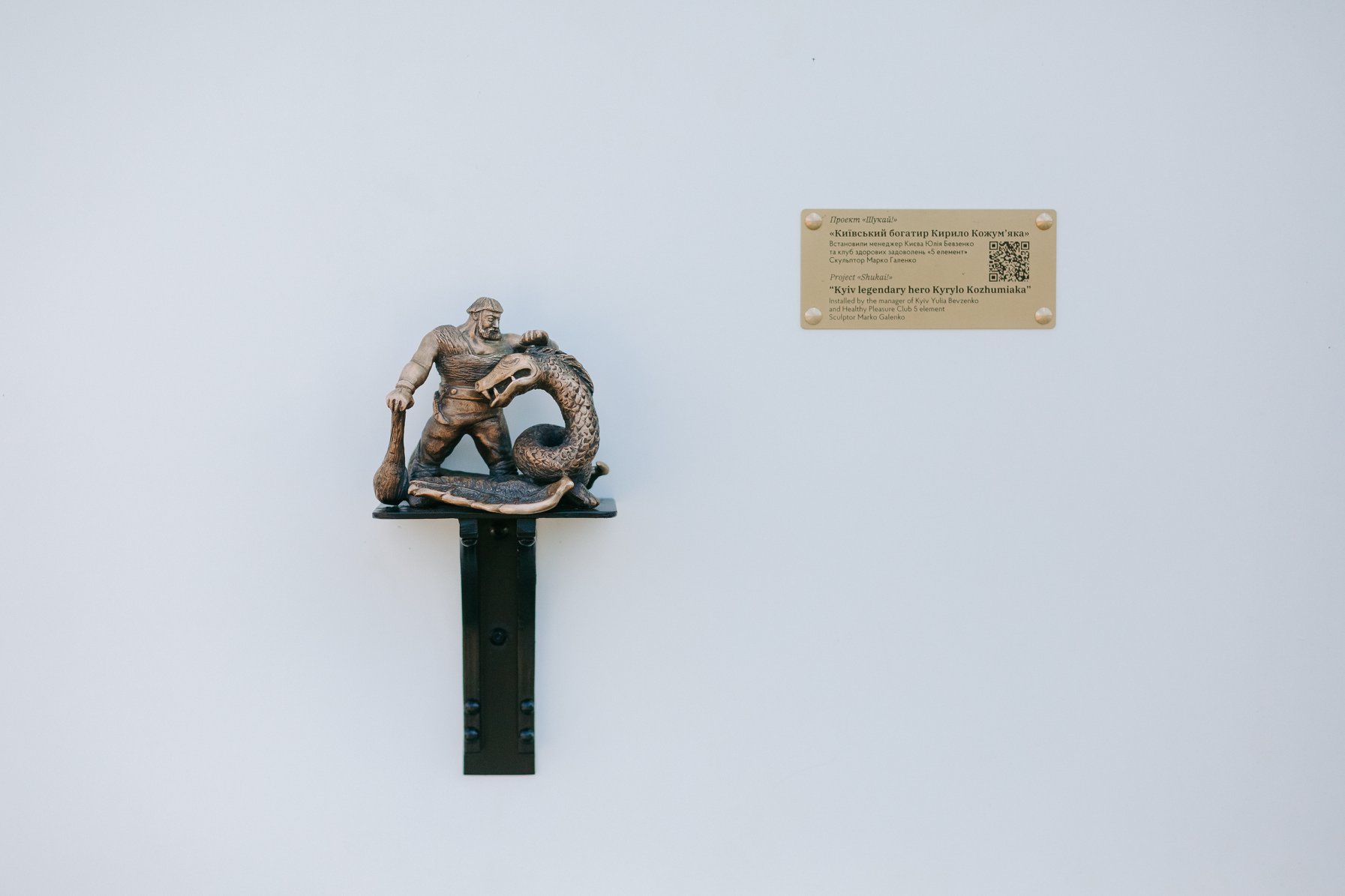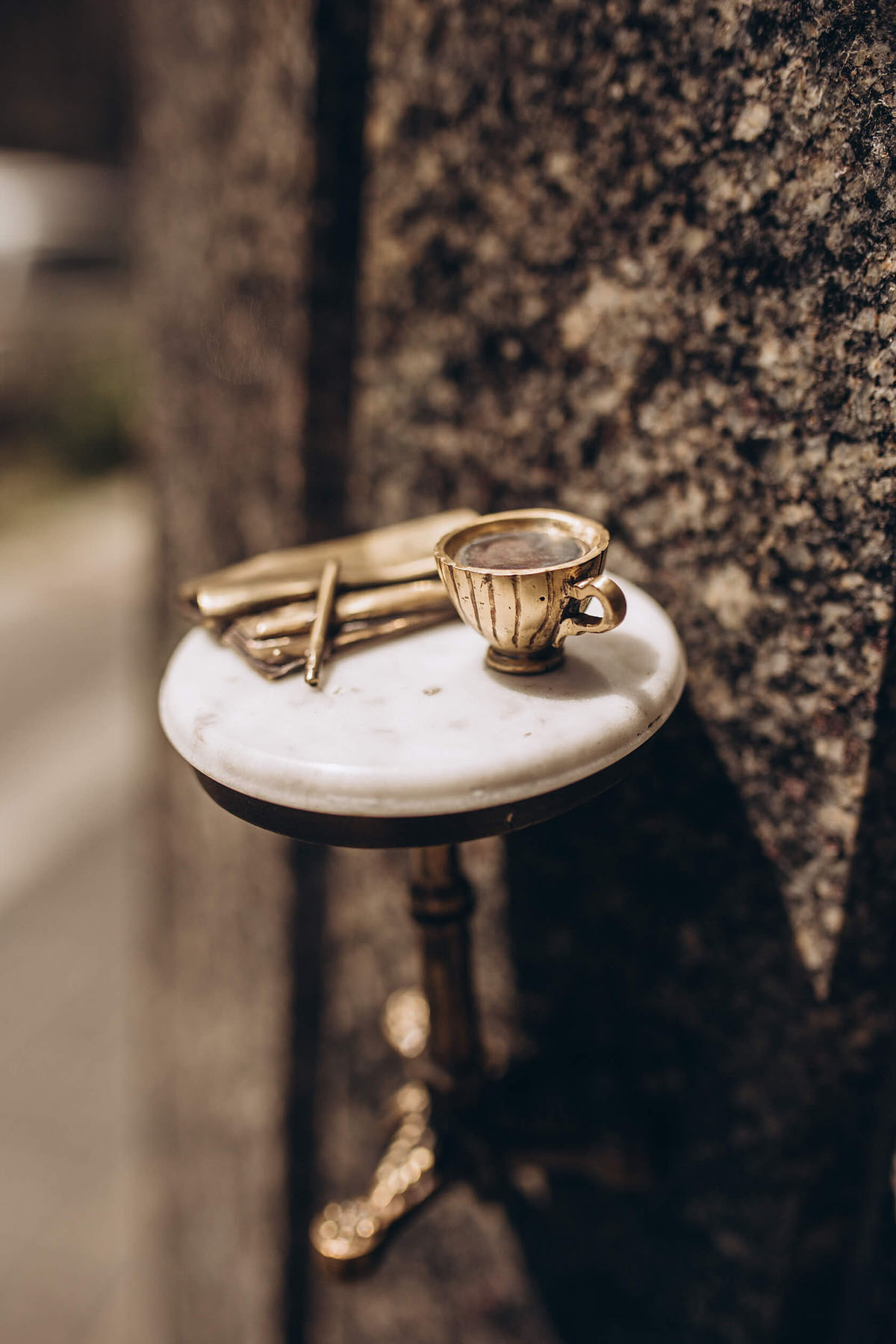 Yulia Bevzenko is the manager of Kyiv and the author of the “Shukai!” project, on whose excursions people relax their souls, fall in love with the city and have something to discuss afterwards. She has already conducted 1000 excursions, won the title “Best Guide of Kyiv 2017” and became the official Eurovision guide from VISA. Excursions are conducted in Ukrainian, Russian and English. Worked for the US and French embassies, Grammarly, Alfa Bank, Syngenta, Fontegro Ukraine, ISAIA, Microsoft, Red Bull, Rijk Zwaan Ukraine, Luxoft, American Chamber of Commerce and others. Below is only a part of the sculptures that were installed in Kyiv – the full list can be found on the official website of the “Shukai!” project. (personal website of Yulia Bevzenko).
Yulia Bevzenko is the manager of Kyiv and the author of the “Shukai!” project, on whose excursions people relax their souls, fall in love with the city and have something to discuss afterwards. She has already conducted 1000 excursions, won the title “Best Guide of Kyiv 2017” and became the official Eurovision guide from VISA. Excursions are conducted in Ukrainian, Russian and English. Worked for the US and French embassies, Grammarly, Alfa Bank, Syngenta, Fontegro Ukraine, ISAIA, Microsoft, Red Bull, Rijk Zwaan Ukraine, Luxoft, American Chamber of Commerce and others. Below is only a part of the sculptures that were installed in Kyiv – the full list can be found on the official website of the “Shukai!” project. (personal website of Yulia Bevzenko).
A delicious culinary symbol of the capital of Ukraine, which was installed in February 2018 on Khreshchatyk and created by sculptor Sergei Galenko with the support of restaurateur Dmitry Borisov. In the 19th century, the dish was “a poultry cutlet sprinkled with breadcrumbs and deep-fried”
It was called: côtelette de volaille – cutlet de volaille. In Kiev, in the restaurants of the National Hotel (which was destroyed by a series of explosions on Khreshchatik, which were organized by the retreating Soviet army in 1941) such Chicken cutlets were prepared at the beginning of the 20th century. During the time of Hetman Skoropadsky, German military commanders were treated to Kiev-style cutlets. Then there was no time for cutlets de volai or cutlets Kiev: communist time had come.
The cutlet de volai is similar in preparation to the Kyiv cutlet, with the difference that the Ukrainian version uses butter as a filling, and some herbs, pepper, cheese, and egg yolk are added to it. If there are more seasonings, and instead of butter there is some kind of sauce or without it at all – this is an ordinary French de volley. In the mid-20th century, the tradition of preparing the gourmet dish Kiev-style cutlet in Kyiv restaurants was revived. The popularity was facilitated by diplomatic treats at the level of representatives of the founding states of the UN. In Kyiv, cutlets are always served on a chicken bone, on which a curler is put on when serving. Now the Kiev cutlet is the same culinary symbol of the capital of Ukraine as the “Kiev cake”.
Where is the Kiev cutlet sculpture?
Khreshchatyk street, 15/4
A blooming symbol of Kyiv, which was installed in February 2018 on Khreshchatyk and created by sculptor Mark Galenko with the support of the Director of Tourism Management of the Kyiv City State Administration Anton Taranenko. It seems that chestnuts have always decorated our city. It is unknown when exactly the first chestnut was brought to Kyiv. But there is an assumption that the first chestnut appeared during the time of Peter Mogila. As if at the Holy Trinity Monastery, Kitaevskaya Pustyn, a huge chestnut tree is still growing, as if planted by Metropolitan Peter Mogila himself – an outstanding religious educator, founder of the Kiev Brotherhood School. The chestnut tree he planted is probably over 350 years old. In Soviet times, chestnut inflorescences were the main element of the city’s coat of arms. A chestnut sprig with a leaf is also on another city symbol – the “Kiev Cake”.
Where is the Kiev chestnut sculpture located?
Khreshchatyk street, 36
According to another legend, the famous “Kiev cake” was invented by 17-year-old pastry chef Nadezhda Chernogor, who got a job at the company after an unsuccessful attempt to enroll in medical school. At first, the profession did not come easily to the girl: the sponge cake crumbled, the cream spread, the icing went there… But in six months, Nadezhda, having developed the recipe for a new weightless nut cake, exceeded all her expectations. Nadezhda Chernogor worked in one place all her life, creating more than a million cakes with her own hands, personally supervising each batch.
However, according to the official version, the appearance of the recipe took place in the same 1956, as a result of persistent experiments. And already in 1973, the Council of Ministers of the Ukrainian SSR for Inventions and Discoveries issued an author’s certificate to the confectioners of the Karl Marx factory, Anna Kurilo and Galina Fastovets-Kalinovskaya. The recipe for “Kyiv cake” has undergone changes over time. The cream and the designs on it were improved, but they mainly concerned the nuts that make up the cake. Initially, cashews specially brought from India were used. When the supply of nuts stopped, they were replaced with domestic hazelnuts. But peanuts were never used at the ROSHEN factory, since this is a completely different recipe and a different taste, it has nothing in common with the “Kyiv cake”. Some changes in the recipe took place at the request of the sanitary service: egg cream gave way to butter cream. What has never changed for one of the symbols of our city is the packaging design – as before, it has a green chestnut branch and two cheerful chestnuts. Also remains unchanged – the secret recipe for airy, protein-nut cakes, which has been kept secret for more than sixty years.
Where is the sculpture “Kiev Cake”?
Nauki Avenue, 1 (building of the Roshen confectionery factory)
The tradition of making syrups, jams and candied fruits has been in Kyiv for a long time. Back in 1386, sweets were sent from Kyiv to the wedding events of the Lithuanian prince Jagiello. The production of dry jam – transparent slices of fruit repeatedly boiled in sugar syrup, dried and rolled in crushed sugar or powdered sugar, was put on an industrial basis in the late 18th – early 19th centuries in Kyiv. After the death of the founder of the Kiev Dry Jam company, Semyon Balabukha, out of many heirs, and these are eight sons and seven daughters, only two sons became continuers of the Kyiv confectionery traditions. The first-born heir to the sweet business, Nikolai Semenovich Balabukha, sought to increase production capacity and in 1834 bought an estate with a large garden and two non-residential houses in Podol, now 27 Sagaidachnogo Street, 27-b. There he set up a workshop for “Kyiv dry jam”. Today we know this product under the word “candied fruits”. The sculpture was installed in April 2018 on Andreevsky Spusk and was created by sculptor Mark Galenko.
Where is the Kiev dry jam sculpture located?
Andreevsky Descent, 2D
The Kiev crew sculpture was installed in May 2018 in Passage and was created by sculptor Mark Galenko with the support of the AVIS company. One hundred and twenty years ago, on June 30, 1897, the Kievlyanin newspaper published a short article under the heading “Car Crew.” Here is the full text: “On the third day, a great sensation was caused by the appearance in Podil of an elegant carriage, which was briskly rolling through the streets without horses. The crew was propelled by a hidden kerosene engine. This original carriage carried three passengers. This is the first self-propelled carriage in Kyiv.” Already at the beginning of the 20th century, a noticeable increase in the number of cars in Kyiv required regulation by the authorities. The Kiev city government began to issue licenses for the technical suitability of cars. A plate was attached to the car – the license number and the year of issue.
Where is the sculpture of the Kiev crew?
Khreshchatyk street, 15/4
The Kiev tram sculpture was installed in May 2018 on Sports Square and was created by sculptor Daria Vovk with the support of the Gulliver shopping center. To replace the horse-drawn tram that ran along Gendarme Street and the steam tram, the first electric tram in the Russian Empire was launched in Kyiv in 1892. On September 9, 1891, they began to build a temporary power station and lay rails on Aleksandrovskaya Street and Aleksandrovsky Spusk. The work was completed by April 1892. On June 1, 1892, passenger traffic began on a 1.5-kilometer-long route. By the beginning of the 20th century, the Kiev tram had become a common form of public transport. The tram network has been steadily expanding and, thanks to conveniently laid out routes, it has been possible to connect almost all areas of the city. The rapid development of the tram in Kyiv led to the fact that at the beginning of 1913 the city already had more than twenty permanent tram routes. The Kyiv tram is more than 125 years old, and even today it pleases residents and guests of the capital of Ukraine with its convenience and reliability.
Where is the Kiev tram sculpture located?
Sports Square, 1
The sculpture of the Kyiv plinth was installed in June 2018 on Vozdvizhenka and was created by sculptor Sergei Galenko with the support of the Ukrbud company. Plintha (from the Greek Πλίνθος – “slab”) is a wide and flat baked brick, which was the main building material in Byzantine architecture and in Ukrainian temple architecture of the 10th-13th centuries. Were built using plinths in Kiev Golden Gate and Sofia of Kiev.
Where is the Kiev plinth?
Degtyarnaya street, 6
The sculpture of the Kyiv fountain (a copy of the famous fountains of Alexey Termen, which were installed throughout Kyiv) was installed in July 2018 near Golden Gate and created by sculptor Sergei Galenko with the support of the cafe “Trishki Bolshe”.
Where is the Kiev fountain?
Vladimirskaya street, 40/2
The sculpture of the Kyiv elephant was installed in September 2018 on Independence Square and was created by sculptor Mark Galenko with the support of the Violity auction for collectors.
In the 1930s, numerous water pools and fountains appeared in Khreshchaty Park, among them was the “Elephant” fountain. A six-meter stream of water flowed from its trunk, the effect was complemented by separate streams along the side. The design turned out to be quite strong and the fountain, one of the few, survived the Great Patriotic War and became a symbol of revival. They loved to depict him on post-war postcards and in films. The Elephant fountain stood in the park until the 1970s.
Where is the Kiev elephant?
Maidan Nezalezhnosti 1, Globus shopping center 1 (from the Lyadskie Gate side)
The sculpture of the Kyiv gramophone was installed in October 2018 and was created by sculptor Darina Vovk with the support of the Starokiev restaurant Pervak. Installed in honor of the Ekstrafon record factory, which was located in Shulyavka and worked from 1911 to 1919 (the factory equipment was expropriated by the Bolsheviks).
Where is the Kiev gramophone?
Rognedinskaya street, 2
The sculpture of the Kyiv pectoral was installed in November 2018 and was created by sculptor Yuri Bilyavsky with the support of the Oberig jewelry house. It can be called Scythian, in honor of the ancient jewelry found, or Kyiv, in honor of the famous theater prize, or because it is located in Kiev Museum of Historical Treasures.
Where is the Kiev pectoral?
Khreshchatyk street, 15
The sculpture of Kyiv Samson was installed in December 2018 and was created by sculptor Daria Vovk with the support of the Astarta business center. Samson is one of the oldest (1748) fountains in Kyiv and is installed on Kontraktova Square.
Where is Samson of Kiev?
Yaroslavskaya street, 58
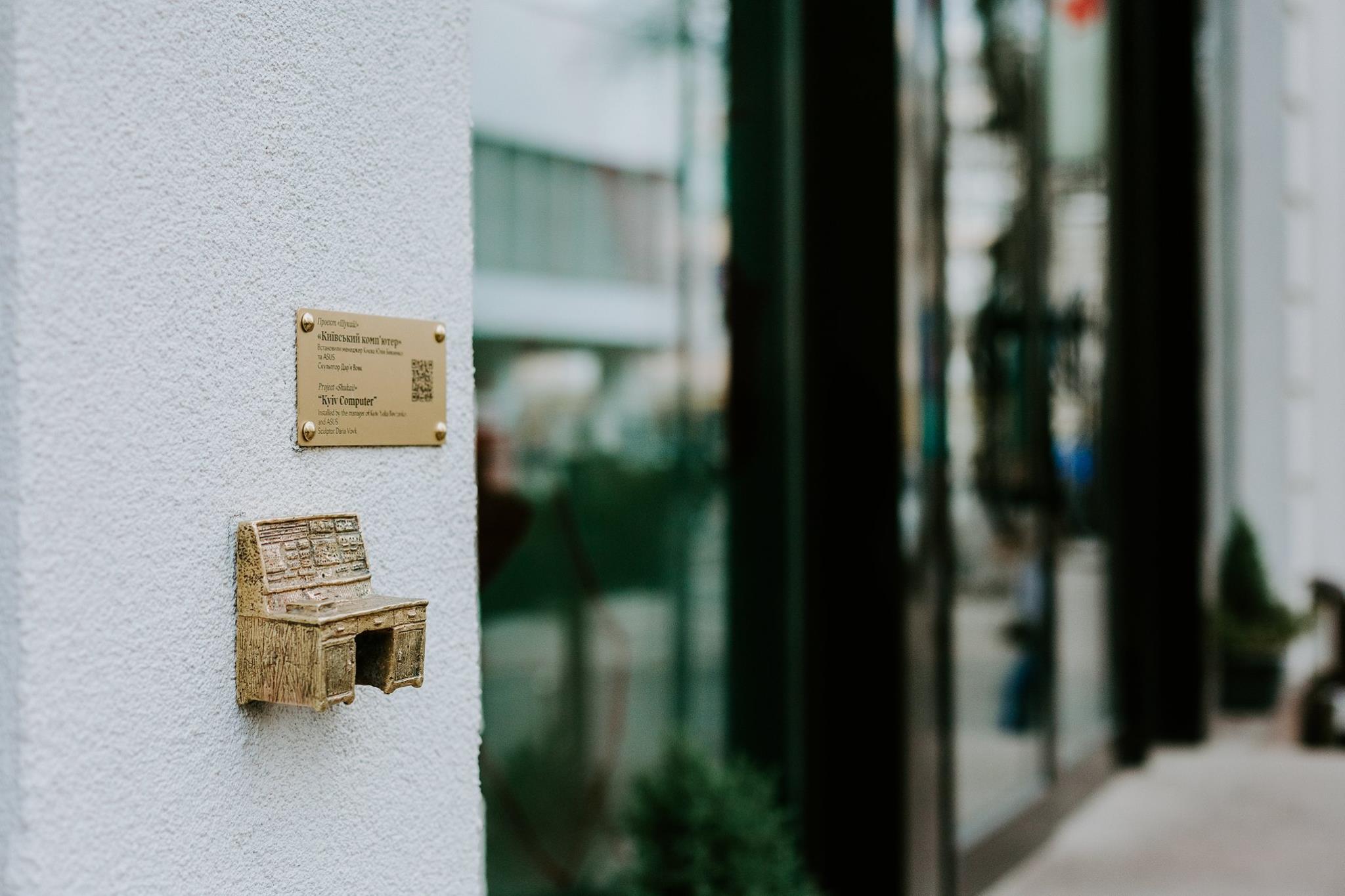
Europe’s first computer, MESM (Small Electronic Computer), was created in Kyiv at the Institute of Electrical Engineering of the Academy of Sciences of Ukraine under the leadership of Academician Sergei Lebedev. The development of MESM began in 1948, and the first launch of the machine took place on November 6, 1950. The computer consisted of approximately 6,000 vacuum tubes, had a power consumption of almost 25 kW and occupied an area of 60 m2. To house it, scientists were allocated part of a two-story building in Feofaniya.
Data was entered into memory using punched cards or a set of codes on a plug-in switch, and output was carried out by photographic recording or printing on an electromechanical device. From 1952 to 1956, the operation of the MESM was carried out around the clock. All these years, computers have been used to solve problems from various applied areas: thermonuclear processes, space flights, rocketry, mechanics, statistical quality control, supersonic aviation and much more. The sculpture of the Kyiv computer was installed in March 2019 and was created by sculptor Daria Vovk with the support of ASUS.
Where is the Kiev computer?
Yaroslavov Val street, 23

Where is the golden gate?
Yaroslavov Val street, 21/20A
Where is the Kiev hero Kirill Kozhemyaka?
Elektrikov Street, 29A
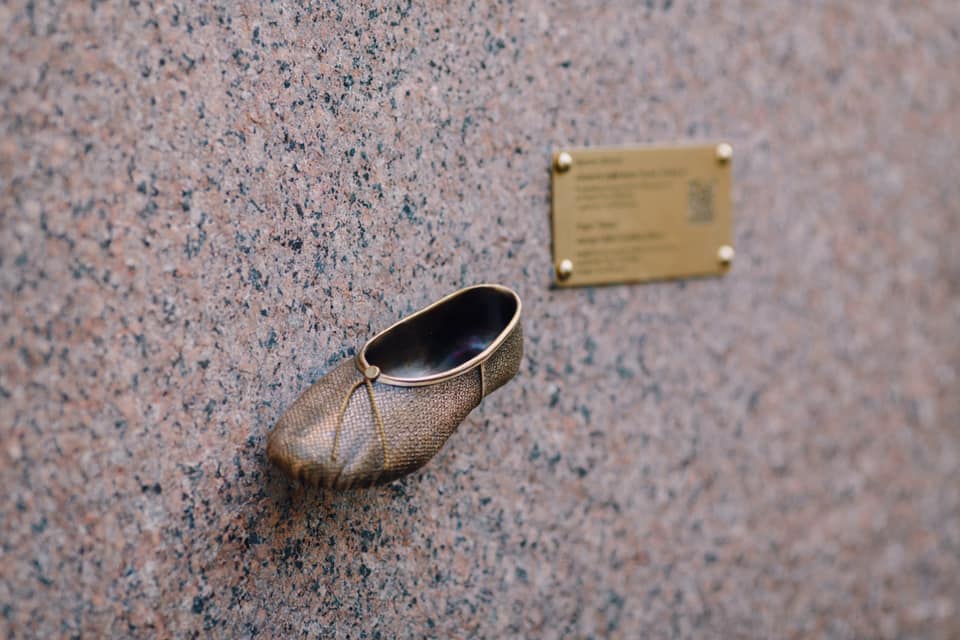
Where is Serge Lifar’s golden slipper?
Taras Shevchenko Boulevard / Pushkinskaya Street, 5-7/29
The history of coffee consumption in Kyiv began much earlier than you think. It was brought by Arab merchants during the time of Prince Vladimir the Great. Since the mid-19th century, the Kiev coffee history has been gradually gaining momentum. The grains are imported from abroad and roasted in Kyiv, at a special factory. I started serving coffee in pastry shops and cafes, which subsequently became more and more popular. The sculpture of Kyiv coffee was installed in June 2019 and was created by sculptor Olga Kolesnik with the support of City-Zen cafe&bar.
Where is Kiev coffee?
Bolshaya Zhitomirskaya street, 20

Igor Ivanovich Sikorsky was the youngest child in the family of a famous psychiatrist, professor at Kyiv University. In 1908-1911 he built his first 2 simple helicopters of a coaxial design without a swashplate. The carrying capacity of the apparatus, built in September 1909, reached 9 pounds. It was presented at a two-day aeronautical exhibition in Kyiv in November of the same year. None of the helicopters built could take off with a pilot, and Sikorsky switched to building airplanes. In 1910, he took into the air the first aircraft of his design, the S-2. Until 1939, Sikorsky created about 15 types of aircraft. Since 1939, he switched to the design of single-rotor helicopters with swashplate, which became widespread. The first experimental helicopter, the Vought-Sikorsky 300, created by Igor Ivanovich in the USA, took off from the ground on September 14, 1939. Essentially, it was a modernized version of his first Russian helicopter, created back in July 1909. The sculpture of the Sikorsky helicopter was installed in June 2019 and was created by sculptor Yuri Bilyavsky with the support of the Institute of Vertebrology and Rehabilitation.
Where is the Sikorsky helicopter?
Yaroslavov Val street, 22
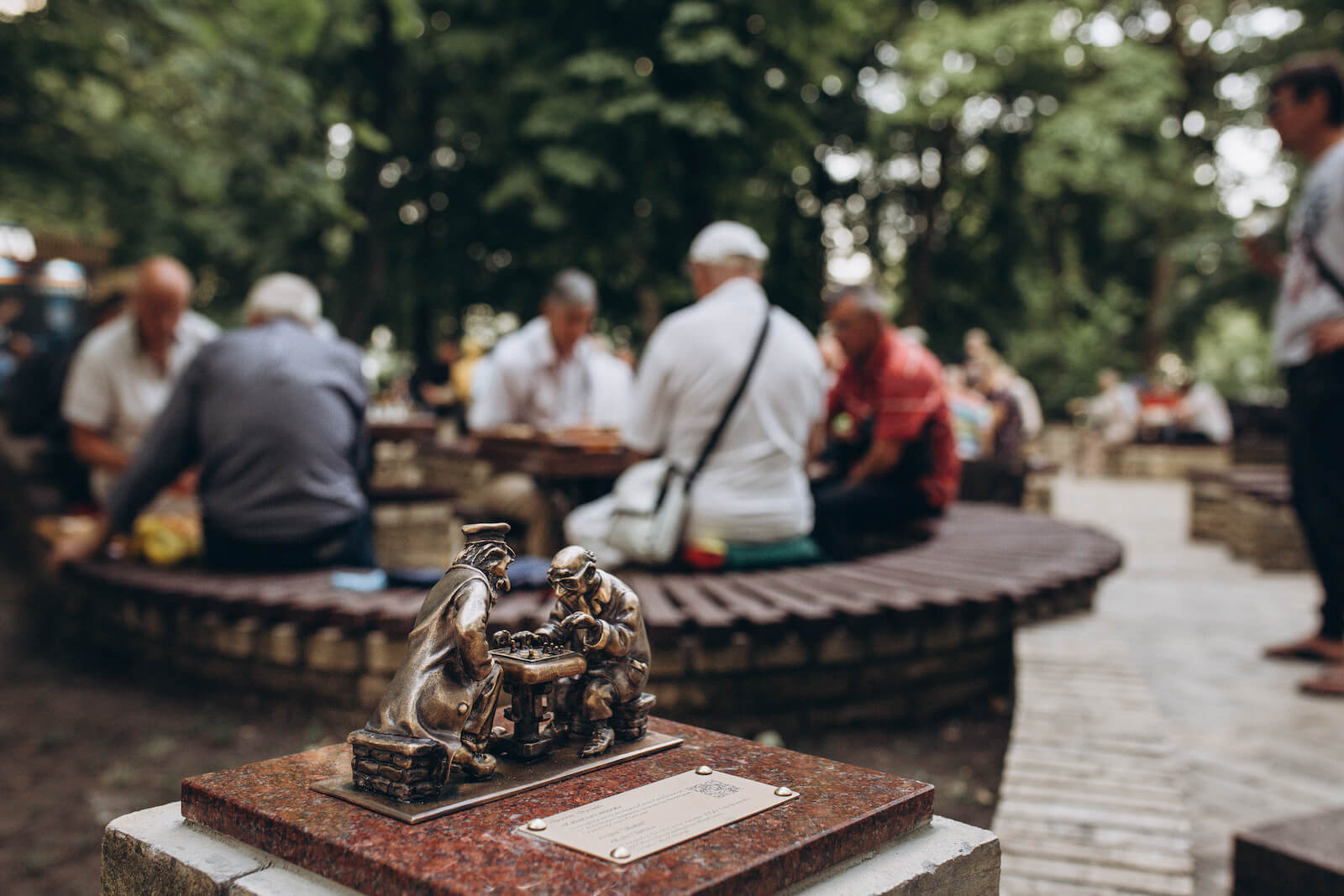
The sculpture of Kyiv chess was installed in August 2019 on the site where amateur chess tournaments have been held for several decades in a row and was created by sculptor Olga Kolesnik with the support of the board game store “Wanted Games”.
Where is Kyiv chess?
Taras Shevchenko Park (corner near the intersection of Lev Tolstoy and Vladimirskaya streets)



